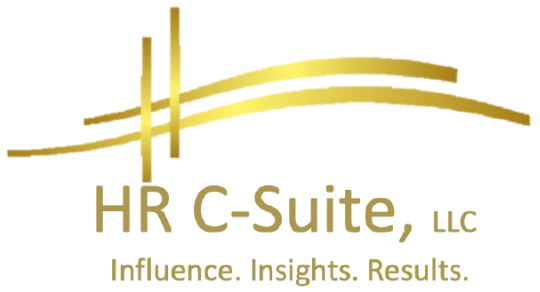Once upon a time, the annual performance review was the cornerstone of employee evaluation - a once-a-year ritual where managers and employees sat down to discuss the past twelve months in a dance of numbers, self-assessments, and sometimes, awkward conversations. But as we look towards the future, it's clear that this relic of corporate tradition is undergoing a significant transformation. Welcome to the new era of performance management - one that's agile, continuous, and far more human-centric.
The Flaws of Traditional Reviews
Before diving into the future, let's acknowledge the shortcomings of the traditional model:
- Stale Feedback: Annual reviews provide feedback that's often too late to be actionable, focusing on past performance rather than future growth.
- One-Size-Fits-All: They often ignore the diversity of roles, personalities, and development needs within an organization.
- Stress and Anxiety: The high stakes of annual reviews can lead to stress, affecting both performance and morale.
- Bias and Inconsistency: Without frequent interactions, biases can creep in, leading to unfair assessments.
- Focus on Ratings: The emphasis on numerical ratings can overshadow a more nuanced understanding of an employee's contributions.
The Evolution: Continuous Feedback and Real-Time Reviews
The future isn't just about changing the frequency of reviews; it's about reimagining the entire concept:
1. Continuous Feedback:
- Daily/Weekly Check-ins: Brief, regular meetings where feedback can be immediate, making it more relevant and actionable. Tools like 15Five or Lattice facilitate these micro-reviews.
- Feedback Apps: Apps that allow for instant, peer-to-peer feedback, turning every project or task into a learning opportunity.
- Pulse Surveys: Quick surveys to gauge employee sentiment, well-being, and engagement, providing a continuous health check on the organization's culture.
2. Real-Time Performance Data:
- Objective Metrics: Using data from project management tools, CRM systems, or even AI-driven analytics to provide a real-time dashboard of performance.
- Gamification: Turning performance tracking into a game with points, levels, and rewards, making the process engaging rather than intimidating.
3. Personalized Development Plans:
- AI-Driven Insights: AI can analyze patterns in performance, suggesting personalized development paths based on real-time data.
- Career Conversations: Instead of a one-off review, ongoing discussions about career aspirations, strengths, and areas for growth.
4. 360-Degree Feedback:
- Holistic Views: Gathering feedback from all directions - peers, subordinates, and even external stakeholders, offering a comprehensive view of an employee's impact.
- Anonymous Feedback: Platforms that ensure anonymity can lead to more honest reviews, helping to address blind spots in performance.
5. Focus on Skills and Learning:
- Skills Inventory: Instead of rating performance, assess and track skill acquisition and application. This encourages a growth mindset.
- Learning Goals: Tying performance to learning objectives, where progress in skill development is as crucial as meeting targets.
6. The Role of Technology:
- AI and Machine Learning: For predicting future performance trends, identifying training needs, and even suggesting career moves within the company.
- VR/AR for Reviews: Imagine a scenario where VR could simulate work environments for feedback or training, making reviews an immersive experience.
7. Cultural Shift to Coaching:
- Manager as Coach: Training managers to be coaches rather than judges, focusing on development over critique.
- Coaching Sessions: Regular, informal sessions where the emphasis is on guiding, not grading.
8. Recognition Over Review:
- Instant Recognition: Systems that allow for immediate recognition of achievements, big or small, creating a culture of acknowledgment.
- Social Recognition Platforms: Where colleagues can celebrate each other's successes publicly within the company.
9. The Exit from Ratings:
- Narrative Feedback: Moving away from numbers to stories, where feedback is given in narrative form, providing context and clarity.
- Outcome-Based Reviews: Focusing on what was achieved, how it was achieved, and its impact, rather than a subjective score.
10. Transparency and Openness:
- Transparent Goals: Clear, shared objectives for teams and individuals, aligning personal growth with company goals.
- Open Feedback Culture: Cultivating an environment where giving and receiving feedback is part of everyday work life.
Challenges and Considerations
While the shift is promising, there are hurdles:
- Cultural Resistance: Changing mindsets from annual to continuous feedback requires cultural overhaul.
- Overwhelm: Too much feedback can be as paralyzing as too little if not managed properly.
- Technology Adoption: Not all organizations are ready or equipped for tech-heavy solutions.
- Privacy and Bias: Ensuring that technology and new methods don't introduce new biases or privacy concerns.
Wrapping it Up
The future of performance reviews is not just about doing them more often; it's about making them a dynamic part of an employee's work life. It's about creating an environment where feedback is a tool for growth, coaching is the norm, and performance is seen through a lens of development rather than judgment.
As we move beyond annual appraisals, we're not just changing how we review performance; we're redefining what performance means in the modern workplace. It's an exciting shift, promising a workforce that's more engaged, adaptable, and ready for the challenges of tomorrow.
